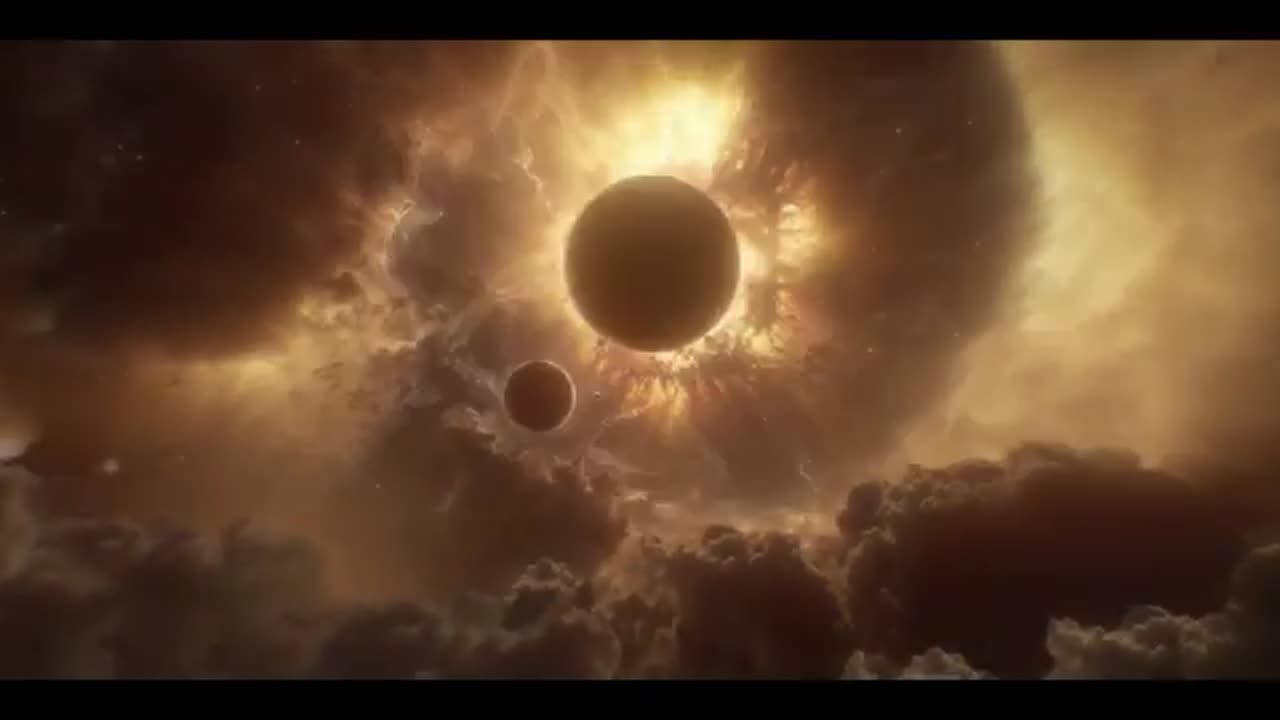Premium Only Content

IMMORTAL SUNS How Dark Matter Could Make Stars Live Forever
The idea of stars living forever thanks to dark matter is a fascinating hypothesis rooted in the interplay between astrophysics and cosmology. Here's an exploration of how this concept might work:
### The Role of Dark Matter in Star Lifetimes
Stars shine by fusing hydrogen into helium in their cores, a process powered by nuclear fusion. This fusion is fueled by the gravitational compression of the star, which creates the extreme temperatures and pressures necessary for these reactions. Once the fuel is depleted, stars typically die, becoming white dwarfs, neutron stars, or black holes depending on their mass.
Dark matter, which makes up about 27% of the universe's mass-energy content, interacts primarily through gravity and possibly through weak interactions with regular matter. It doesn't emit, absorb, or reflect light, making it "dark" to electromagnetic observation. However, in theoretical scenarios where dark matter interacts with stars, it could potentially alter their lifespans in several ways:
#### 1. **Dark Matter Annihilation**
Some theories propose that dark matter particles might be capable of annihilating each other to produce energy. If a star were to capture significant amounts of such dark matter in its core, the annihilation could serve as an additional energy source. This supplementary energy could extend the star's lifespan, potentially indefinitely, by offsetting the natural depletion of nuclear fuel.
#### 2. **Gravitational Heating**
Dark matter might also accumulate in the cores of stars through gravitational capture. If this accumulation reaches a significant density, interactions between dark matter particles could lead to additional heating of the stellar core. This process could prevent the star from cooling and dying as quickly, effectively prolonging its lifecycle.
#### 3. **Stabilization of Stellar Evolution**
Dark matter could hypothetically alter the balance between gravity and radiation pressure in a star. By providing an external or internal gravitational influence, dark matter might stabilize the star, preventing it from progressing to later stages of evolution such as red giant or supernova phases.
### Implications for "Immortal Suns"
If dark matter can keep stars burning indefinitely, it would revolutionize our understanding of stellar evolution and the ultimate fate of the universe. The concept aligns with the idea of a universe that remains lit and dynamic far beyond the normal timescales predicted by current astrophysics.
However, there are challenges and unknowns:
- **Interaction Strength**: Dark matter's interactions with normal matter appear to be extremely weak, making such processes rare or negligible in most scenarios.
- **Empirical Evidence**: While dark matter is well-supported by indirect evidence (gravitational effects), direct observations of its interactions with stars are lacking.
- **Energy Balance**: Even with dark matter annihilation, the energy produced may not be sufficient to counteract stellar processes on a meaningful scale.
### Potential Observational Evidence
To investigate this idea, astronomers might look for:
- Unusually long-lived stars in dark matter-rich regions, such as the centers of galaxies or dark matter halos.
- Stellar populations with anomalous luminosity patterns inconsistent with known nuclear fusion processes.
- Signatures of dark matter interactions, such as excess neutrinos or gamma rays emitted by stars.
This hypothesis, though speculative, opens a door to new possibilities in our understanding of the cosmos and the nature of dark matter. It also sparks curiosity about how the fundamental components of the universe might intertwine to shape its destiny.
-
 LIVE
LIVE
StevieTLIVE
1 hour agoWarzone HYPE Duos with GloryJean
15 watching -
 1:05:11
1:05:11
Donald Trump Jr.
3 hours agoBuilding the Future with American Bitcoin, Plus Eric's Triggered Debut! | TRIGGERED Ep.272
94.2K52 -
 LIVE
LIVE
MissesMaam
6 hours agoLetting a Game from 2009 RageBait Me | Achievement Hunting PVZ 💚✨
34 watching -
 1:01:40
1:01:40
The Nick DiPaolo Show Channel
5 hours agoTrump Waiting On Tariff Ruling | The Nick Di Paolo Show #1788
22.7K20 -
 LIVE
LIVE
jordobombay
2 hours agoWarzone Update, Massive Day For The Unemployed
15 watching -
 LIVE
LIVE
EzekielMaxwellVT
1 hour agoVTuber/VRumbler -Elden Ring Nightreign - WALKING MOUTH AND CRACKED OUT DOGGY
40 watching -
 1:23:59
1:23:59
Dr. Drew
9 hours agoSalty Cracker: Dr. Drew's Birthday, Sydney Sweeney's Jeans, Rosie's Apology To MAGA & More News From Our Clown World – Ask Dr. Drew
108K51 -
 1:04:40
1:04:40
BonginoReport
3 hours agoMAHA Madness: RFK Jr. vs Newsom - Nightly Scroll w/ Hayley Caronia (Ep.127) - 09/04/2025
51.5K26 -
 1:58:36
1:58:36
Redacted News
4 hours agoUkraine bans Christians, Trump Sends Troops to Chicago, German AFD members being murdered | Redacted
125K108 -
 1:17:43
1:17:43
Michael Franzese
3 hours agoMy Daughters CONFRONTED Me About Being a Mobster Dad
42.1K2